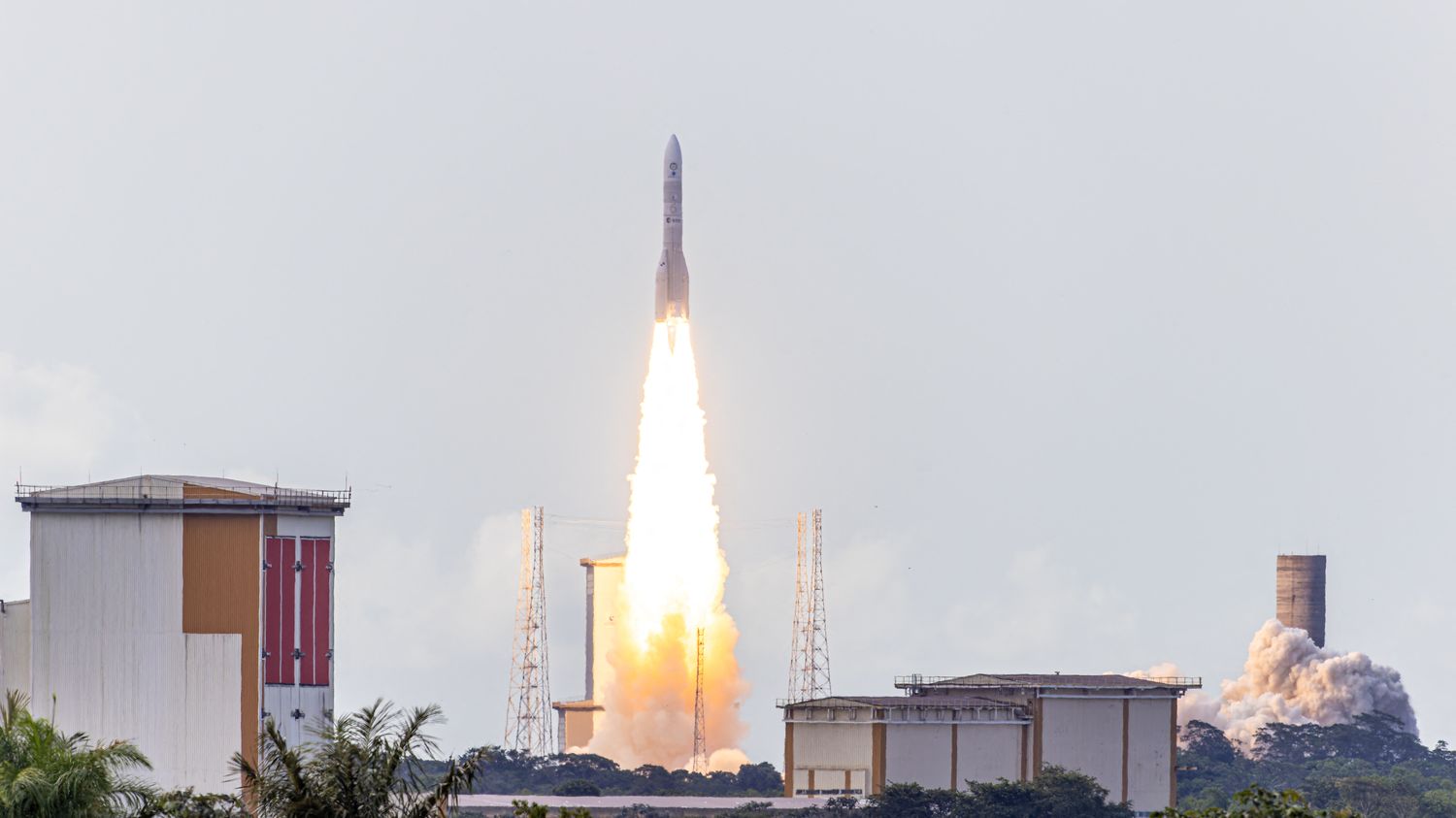This inaugural flight marks Europe’s return to autonomous access to space. Since the end of Ariane 5 in July 2023, it no longer had the means to access space independently.

Published
Reading time: 1 min

“This is a historic day for ESA and for Europe”greets the Director General of the European Space Agency (ESA), Joseph Aschbacher. Ariane 6 put the micro-satellites it was carrying into orbit on Tuesday, July 9, marking the success of the inaugural flight of the European rocket. With a delay of one hour due to a problem “minor” resolved in the morning, the 56-meter rocket took off at 9 p.m. (Paris time) from its launch pad in Kourou, Guyana.
5,4,3,2,1 Vulcan ignition! 🚀
Relive the moment the first Ariane 6 launched from @EuropeSpacePortFrench Guiana 👇
🔊Turn the sound all the way UP ⬆️ #GoAriane! pic.twitter.com/WYRpPLGtnn
— European Space Agency (@esa) July 9, 2024
“The first launch of Ariane 6 is a success!”congratulated Emmanuel Macron on X in the evening. This success marks the return of Europe’s autonomous access to space, but it will not be considered complete until the upper stage has fallen back into the atmosphere as planned, almost three hours after launch.
This Ariane 6 flight was strategic for the Europeans if they want to continue to exist in the face of the American giant SpaceX, which launches its reusable Falcon 9 rockets about twice a week. Deprived of a launcher since the end of Ariane 5 in July 2023, Europe no longer had the means to access space independently.
For this first flight, Ariane 6 did not carry any major satellites from its customers. On board are scientific experiments and microsatellites from universities, such as the PariSat Project of the École nationale supérieure de l’électroménager et de ses applications. In total, Ariane 6 carries 18 “passengers”, including eight cubesats, small satellites the size of a shoebox, and a two-ton inert mass simulating the Galileo satellites, the European geolocation system, more precise than GPS.
